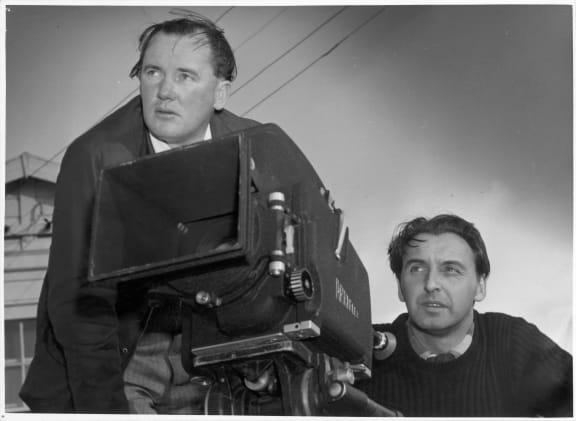

John O’Shea and Roger Mirams behind a blimped Arriflex. Probably during the shooting of one of the Kawerau productions 1954-55. Ngā Taonga Sound and Vision, Stills Collection
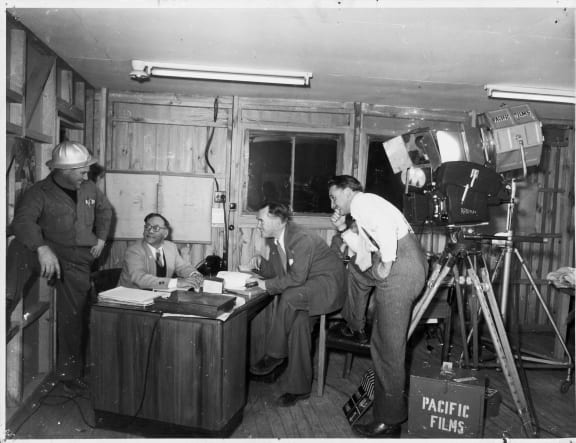

Roger Mirams, at right, and John O’Shea, seated, run through a set-up with the mill employees during the filming of the construction of the Tasman Pulp and Paper Mill at Kawerau, New Frontier: The Sotry of Kawerau, 1954. Ngā Taonga Sound and Vision, Stills Collection
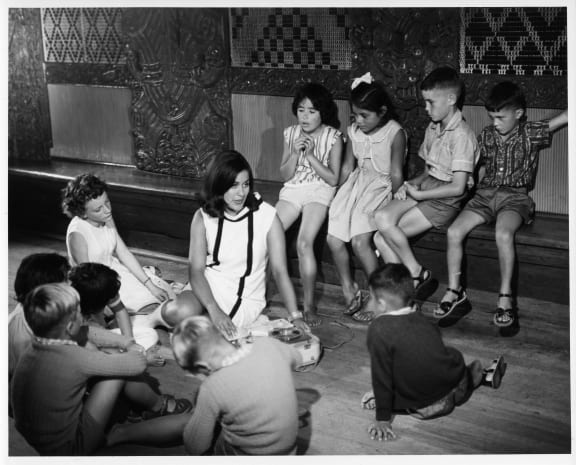

Mozart in the metting house. To orchestral playback, Kiri Te Kanawa perofrms an operatic aria to the assembled children in Don’t Let It Get You, Rotorua, January 1966. Ngā Taonga Sound and Vision, Stills Collection
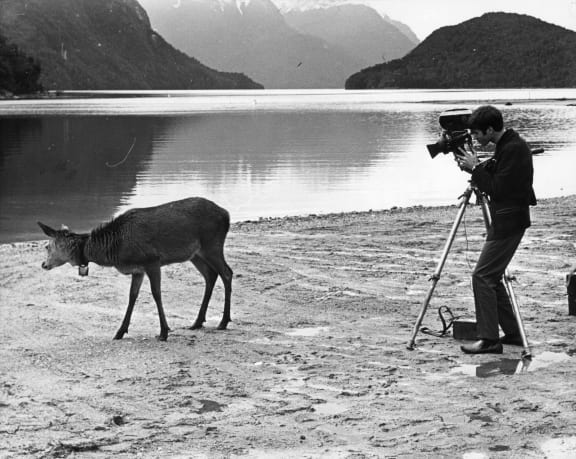

Early days at Manapouri. Michael Seresin captures local fauna in an undisturbed Deep Cove. The beginnings of Mountains to Master, 1965. Ngā Taonga Sound and Vision, Stills Collection
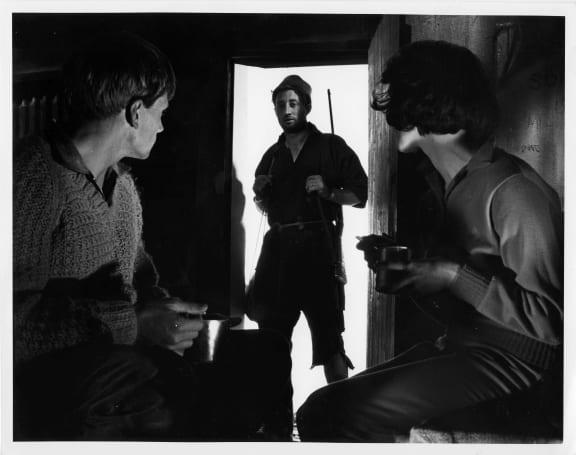

A scene from Runaway: Interrupted in the hideaway, Barry Crump becomes a disturbing presence for Colin Broadley and Deidre McCarron. South Westland, May 1964. Ngā Taonga Sound and Vision, Stills Collection
The story behind Pacific Films and its idiosyncratic producer, John O'Shea (1920-2001) is one of grit, determination and a belief that New Zealand needed a homegrown screen industry. Filmmaker and writer John Reid has researched and written a comprehensive history of the early days of New Zealand's screen community.
In Whatever It Takes: Pacific Films and John O'Shea 1948-2000, Reid tells the stories of how a handful of feature films were made in the 1950s and the birth of the Film Commission. It also details personalities and politics that laid the groundwork for the industry that exists today. He joins Kathryn to talk about how John O'Shea nurtured and encouraged a generation of film makers through uncertain times.











